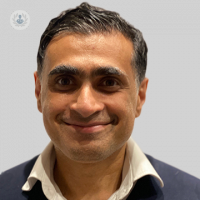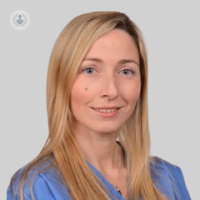Testicular cancer
Mr Marcus Cumberbatch - Urology
Created on: 11-13-2012
Updated on: 06-12-2023
Edited by: Carlota Pano
What is testicular cancer?
Testicular cancer occurs when cancer cells form in the testes, which are the oval-shaped glands that produce sperm and the hormone testosterone in men between 15 and 35 years old. Testicular cancer can occur in one or both testes, and is more common in those who experience an abnormal testicular development or an undescended testicle.

There are two main types of testicular cancer: seminoma, and non-seminoma, of which there are further sub-groupings.
What are the symptoms of testicular cancer?
The symptoms of testicular cancer are:
- A hard and painless lump in the testicles or the inguinal region
- Pain and tenderness in the lower abdominal area
- Pain in the scrotum
- A feeling of heaviness or swelling in the scrotum
- Enlarged or swollen breasts
Testicular cancer risk factors
Certain factors may increase the individual risk of testicular cancer. You are more likely to develop testicular cancer if a family member has had it. Certain conditions such as an undescended testicle also increase the risk.
Testicular cancer more commonly affects men over the age of 54, and Caucasian men. Testicular cancer is much more prevalent in Europe, Canada and the US than in Asia and Africa.
Can testicular cancer be prevented?
As the exact causes are still unknown, there is no way to prevent testicular cancer. However, it has been shown that orchidopexy - surgery to lower and fix the testicle not descended into the scrotum - can prevent the development of testicular cancer in children with undescended testicles.
What is the treatment for testicular cancer?
This type of cancer has a cure rate of more than 90% if it is localised and treated in time. There are several treatments that are chosen depending on the stage in which the tumour is identified.
At an early stage, the tumour generally only affects the testicle, so surgery to remove it is usually sufficient in most cases, although in others, treatment with chemotherapy or radiotherapy may be needed to reduce the risk of it developing further.
If the cancer has spread outside the testicle, then generally radiotherapy or chemotherapy is presented as an option.
If the cancer returns, then radiotherapy or chemotherapy may again be administered.










